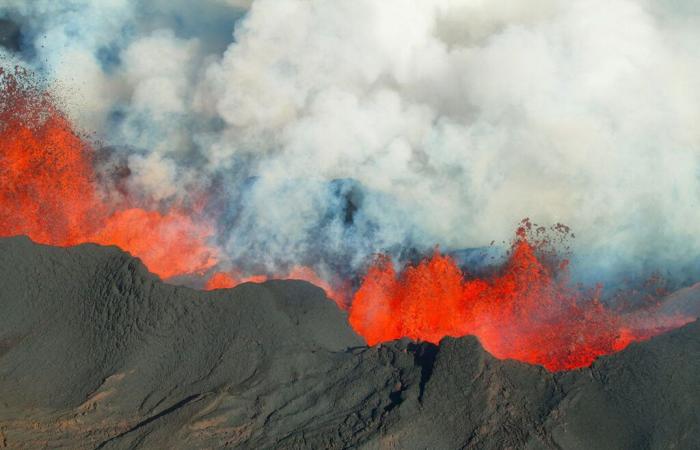Iceland, land of fire and ice, is embarking on a bold project that could revolutionize our approach to renewable energy. This Nordic country, known for its lunar landscapes and geysers, is betting big on deep geothermal energy to exploit an almost unlimited source of energy at the very heart of our planet.
Iceland, pioneer of magmatic geothermal energy
Located on the mid-Atlantic ridge, Iceland benefits from intense volcanic activity. Far from being defeated by the challenges posed by this tumultuous nature, the Icelanders decided to take advantage of them. In Krafla, in the northeast of the country, a team of scientists is preparing an unprecedented drilling: drill into the magma to exploit its energy.
This titanic project, comparable in ambition to the James Webb space telescope, aims to reach a magma chamber located at a dizzying depth. To give an idea of scale, imagine five times the height of the Empire State Building. The objective? Transform this natural furnace into a powerhouse of unparalleled power.
The figures put forward are dizzying:
- Magma temperature around 1,000°C
- Energy potential ten times greater than conventional geothermal energy
- Two magma drillings equivalent to 18 traditional wells
If the project is successful by 2027, humanity could well hold the key to a clean and almost unlimited energy. This advance is in line with recent progress in renewable energies, such as solar electricity at €0.01/kWh, a feat achieved by certain pioneering countries.
From destruction to creation: Iceland reinvents its relationship with volcanoes
Iceland's recent history is marked by a series of volcanic eruptions unprecedented in eight centuries. The town of Grindavík paid the price, suffering earthquakes that opened gaping faults in its streets. Some houses were even engulfed by lava.
However, the Icelanders knew how to take advantage of this destructive force. In barely 80 years oldthe country moved from coal to geothermal energy, which heats today 90% of households. This energy transition has propelled the former poorest country in Europe among the richest.
The following table illustrates this remarkable transformation:
| Period | Main energy source | Economic impact |
|---|---|---|
| 1940s | Coal | Among the poorest countries in Europe |
| 2024 | Geothermal energy | Among the richest countries in Europe |
This energetic metamorphosis validates the adaptability and ingenuity of Icelanders in the face of the challenges posed by their unique environment.
Global potential for deep geothermal energy
The Icelandic experience could well be emulated throughout the world. From California to Japan to Kenya, other volcanic regions could replicate this revolutionary technology. THE success of this project would pave the way for a new energy erawhere volcanoes, long symbols of destruction, would become the pillars of a sustainable energy future.
However, the technical challenges remain colossal. How to contain and exploit magma at nearly 1,000°C without endangering facilities and personnel? Conventional materials cannot withstand such temperatures, with steel becoming liquid and rock turning into lava.
Icelandic scientists are working hard to solve these problems. Their solutions could include:
- The development of new alloys resistant to high temperatures
- Innovative cooling systems
- Advanced drilling techniques allowing you to approach the magma without directly penetrating it
If these obstacles are overcome, deep geothermal energy could well become the cornerstone of the global energy transition. It would offer a stable, predictable and virtually inexhaustible source of energy, perfectly complementing solar and wind energy, which are more intermittent in nature.
Iceland, by pushing the limits of geothermal exploitation, could thus open the way to a global energy revolution. This small Nordic country shows that with boldness and innovation, even the most destructive forces of nature can be tamed for the good of humanity and the planet.






